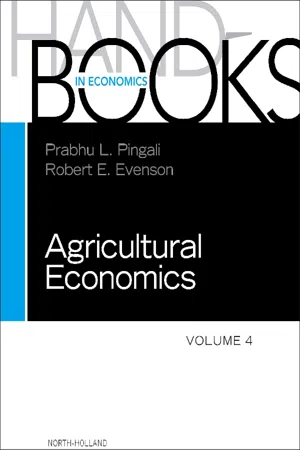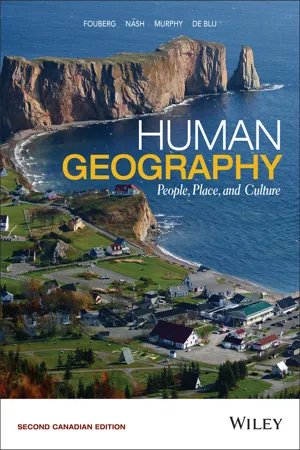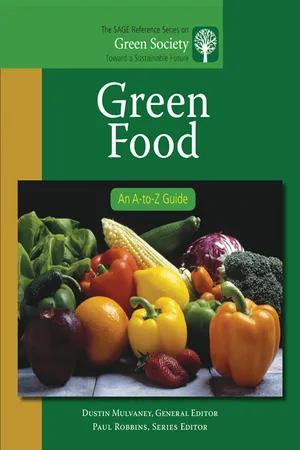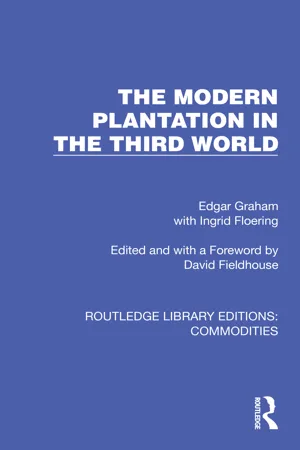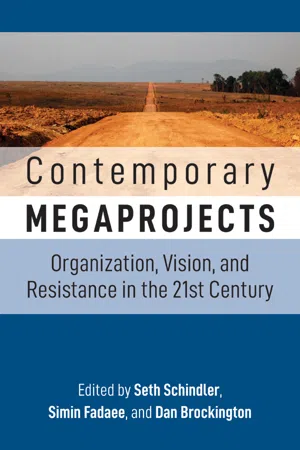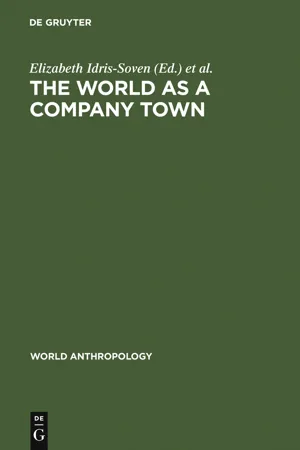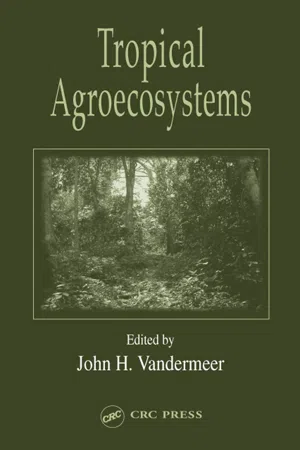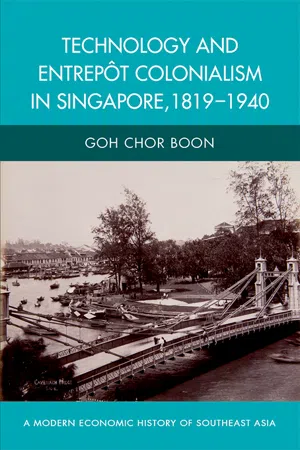Geography
Plantation Agriculture
Plantation agriculture refers to large-scale commercial farming of cash crops such as cotton, sugar, coffee, and rubber, typically in tropical or subtropical regions. It often involves the use of extensive labor forces and is associated with historical systems of colonialism and slavery. Plantation agriculture has had significant social, economic, and environmental impacts in the regions where it is practiced.
Written by Perlego with AI-assistance
Related key terms
1 of 5
9 Key excerpts on "Plantation Agriculture"
- eBook - ePub
- Robert E. Evenson, Prabhu Pingali(Authors)
- 2009(Publication Date)
- North Holland(Publisher)
1. Introduction
Plantations in the tropics, employing a large number of laborers under the command of centralized management hierarchy for the production of tropical cash crops for commercial sales, represent a unique organization in agriculture. They are unique in contrast with small farms based mainly on family labor, which are the common form of agricultural production in the world, including both temperate and tropical areas, with respect to subsistence crops such as rice, wheat, and maize. How has this organization emerged in the tropics? What roles has it played until present and might it play in the future? These are the questions addressed in this chapter.According to a broad definition by William Jones (1968, p. 154) , the plantation is “an economic unit producing agricultural commodities (field crops or horticultural products, but not livestock) for sale and employing a relatively large number off unskilled laborers whose activities are closely supervised.” This definition can include estate farms based on forced labor, such as slavery, corvee, and serf, instead of free wage labor and may also be called plantations. These estates based on forced labor were established typically before the onset of the industrial revolution in Europe and North America, having major impacts on the southern United States and Latin America, including the Caribbean as well as Eastern Europe (such as the Junker estates in Prussia). Despite their great historical interests, these estate farms based on forced labor are not included in this review. The plantations dealt with in this chapter are those based on free wage labor, which were typically established in tropical Asia and Africa after the mid-19th - eBook - PDF
Human Geography
People, Place, and Culture
- Erin H. Fouberg, Alexander B. Nash, Alexander B. Murphy, Harm J. de Blij(Authors)
- 2015(Publication Date)
- Wiley(Publisher)
For example, decisions made by colonial powers in Europe led to the establishment of plantations from Central America to Southeast Asia. The plantations grew crops not for local markets but for consumers in Europe; similarly, U.S. companies founded huge plantations in the Americas. Over the past few centuries, the impact of this plantation system transformed the map of world agriculture. And the end of colonial rule did not signal the end of the agricultural practices and systems that had been imposed on the former colonial areas. Long-entrenched agricultural systems and patterns are not quickly or easily transformed, and even food-poor coun- tries must continue to grow commercial crops for export on some of their best soils, where their own food should be harvested. Commercial farming—the agriculture of large-scale grain producers and cattle ranches, mechanized equipment and factory- type labour forces, plantations, and profit—has come to dominate in the world’s economic core, as well as in some places in the semi-periphery and periphery. As we will see, it is a world apart from the traditional farms of Asia and Africa. 258 CHAPTER 9 Agriculture those countries from growing food for consumption by their own people. AGRIBUSINESS AND THE CHANGING GEOGRAPHY OF AGRICULTURE In more recent decades the commercialization of crop production and the associated development of new agricultural technologies have changed how agricultural goods are grown and have sparked the rapid growth of agribusiness—an encompassing term for the businesses that provide a vast array of goods and services to support the agricul- tural industry in the produc- tion of a final food product for consumption. This includes the manufacturing and distri- bution of farm supplies, on-farm production, storage, processing, distribution, marketing, and retailing. - eBook - PDF
Green Food
An A-to-Z Guide
- Dustin Mulvaney, Dustin R. Mulvaney(Authors)
- 2010(Publication Date)
- SAGE Publications, Inc(Publisher)
If there was a good harvest, the system was beneficial; however, if the harvest was poor, sharecroppers would be in debt after the harvest. It was not until about 1900, when the boll weevil forced diver-sification of crops and mechanization from the 1920s and afterward, that the system almost ended. Slave plantations were used extensively in the days of European colonialism in the Americas. Sugarcane was grown on plantations in Brazil (Portuguese engenho or “engine”), in Louisiana, and on many Caribbean islands such as Cuba, Haiti, and Jamaica. Since large gangs of labor are often needed for agricultural crops, the end of slavery did not end plantation labor. Hawaiian pineapple, Central American bananas, and chicle are only three of the crops grown in the 1800s and 1900s that were grown on plantations. Many plantations have been opened in tropical or semitropical countries. Plantation crops grown in Egypt and India include cotton. Tea, coffee, tobacco, cacao, sisal, hemp for rope, rubber, chicle (gum), indigo, and other crops have commonly been grown on planta-tions in semitropical or tropical areas. Modern plantations grow a great many crops, but each is usually a monoculture. The single crop is sold for cash and is then distributed to distant markets. The laborers used on modern plantations are increasingly well educated and employ machinery in the produc-tion of their respective crops. Industrial plantations are devoted to a single crop, usually trees. Timber plantations are common in temperate zones today. Trees grown may be Douglas fir trees in Washington State or pine trees in Georgia. The goal of timber companies in this type of industrial tim-bering is to raise a volume of wood as quickly as possible. This means that each tree is looked on as a stack of dollar bills (or other currency in other countries), rather than as a part of nature. In many of the northern states and Canada, Christmas trees are planted on planta-tions. - eBook - ePub
- Edgar Graham, Ingrid Floering(Authors)
- 2024(Publication Date)
- Routledge(Publisher)
From all these definitions the list of salient features is: a ‘capitalist’ type of organisation (which will be redefined later as ‘corporate’); a large labour force; extensive land areas; skilled management; close supervision for a system of detailed routine; export of the product. On-site processing and its integration with the agricultural side is important but is an essential element of the plantation only for certain crops, and is not a universal feature. Similarly estate housing is not universal, but is an important and indeed difficult part of the management task when it exists; it then becomes a defining part of the plantation.There is an extended variety of crops for which the plantation system can be used and which in turn influence its working and basic principles. Tea, coffee, coconuts and cocoa are grown in plantations in many countries. Sugar and tobacco are major commodity crops which are grown by methods which are often those of the plantation, and their divergencies can be used to test the definition. Cotton has been the subject of one of the biggest and earliest of modern experiments in the Gezira scheme in the Sudan.But the best examples to date are rubber and palm oil; indeed most of the characteristic features of the modern plantation, particularly in the management and supervisory structures and the techniques of the training of labour, arise from the methods originally conceived from around the beginning of the twentieth century in the rubber industry and developed and improved continuously since that time.What then is the management structure and the form of its organisation?The Organisation and Working of a Plantation
The key feature of a plantation is the use of detailed routine — the methods it employs, the framework that makes it effective and the technology and skills that are thereby deployed.This detailed routine is, as the definition states, a technology in itself. It is this which makes effective the application of the different sciences and ensures that the best practices are carried through. Its secret lies in continuity and planned repetition in the performance of well-defined and skilled tasks at the right time. The objective is to bring consistency of treatment to all agricultural operations at all times through a programme which can take into account all the factors — agronomic and economic. Such a programme must cover each estate, each division, each field and indeed each plant and tree regularly, with specific operations which incorporate the best practice, whether it be of clearing, planting, weeding, fertilising or harvesting. Moreover, each individual operation is the subject of constant study to improve its efficiency — to do it better and in less time, while simultaneously preserving and striving to improve the quantity and quality of the crop. - eBook - PDF
Contemporary Megaprojects
Organization, Vision, and Resistance in the 21st Century
- Seth Schindler, Simin Fadaee, Dan Brockington(Authors)
- 2021(Publication Date)
- Berghahn Books(Publisher)
CHAPTER 4 nnn Mega-Plantations in Southeast Asia Landscapes of Displacement Miles Kenney-Lazar and Noboru Ishikawa Southeast Asia has become one of the world’s hot spots for industrial agriculture and tree plantation development. The region is the source of 76 percent of the world’s natural rubber, 86 percent of the world’s palm oil, and 59 percent of the world’s coconuts. Agri-cultural crop production covers more than 122 million hectares (ha) of land (FAO 2016), established in a diverse range of environments including tropical rainforests, peatlands, and lowland agricultural zones. In Malaysia and Indonesia, more than 16 million ha of oil palm plantations have been established (Cramb and McCarthy 2016b; Hawkins et al. 2016), while 1 million ha of rubber plantations have been planted in areas of China, Laos, Thailand, Vietnam, Cambodia, and Myanmar where rubber was not traditionally grown (Li and Fox 2012). Cash crop plantations were first established across the region by colo-nial powers for purposes of expanding and solidifying territorial control, pacifying civil unrest in rural areas, and creating new sources of capital accumulation, via natural rubber, coffee, sugarcane, and coconut plantations (Byerlee 2014; De Koninck 2011; Ishikawa 2010; Moore 2000; Murray 1992; Stoler 1995; Wolf 1982). Yet, their rapid expansion in the past few decades represents a new era in plantation development across Southeast Asia in scale and scope. Plantation development in Southeast Asia has led to dramatic transformations of the countryside. The region has become one of the epicenters of the contemporary “Plan-tationocene,” a term coined by Donna Haraway and fellow anthropologists including Noboru Ishikawa (Haraway 2015; Haraway et al. 2016; Ishikawa and Soda 2019). The - eBook - PDF
The World as a Company Town
Multinational Corporations and Social Change
- Elizabeth Idris-Soven, Mary K. Vaughan, Elizabeth Idris-Soven, Mary K. Vaughan(Authors)
- 2011(Publication Date)
- De Gruyter Mouton(Publisher)
1 The term West Indies is used here to denote the English-speaking territories of the Caribbean, South America, and Central America. Sugar is the major plantation crop in Guyana, Trinidad-Tobago, Barbados, St. Kitts, Antigua, Jamaica, and Belize. Banana is the main crop in the Windward Islands where both plantations and peasants engage in its production. Emphasis will be placed on the sugar plantation in the present exercise, because the banana industry is of recent vintage — having replaced sugar in the Windward Islands during the last two decades. 3 2 2 GEORGE L. BECKFORD THE GENESIS OF AGRARIAN CAPITALISM Contemporary West Indian economy and society are a legacy of the slave plantation system which was introduced by European colonizers in the sixteenth century and which lasted until the mid-nineteenth century. That system of agricultural organizations was based on the production of staple commodities (chiefly sugar) for export to Europe. European colonizers captured the land from the indigenous Indian peoples, and they then established a system of large-scale agriculture utilizing the slave labor of African peoples secured from the Atlantic slave trade. In that system of production, the European capitalists owned the slaves (the labor power), the land, and the capital stock built by the slaves. The surplus realized from that production accrued entirely to the European owners of the means of production. The slaves received only what was required for subsistence. Alienation and mass poverty was at its extreme during that period of history. 2 Caribbean economy during the era of the slave plantation was simply an overseas branch of European economy. The Caribbean was a locus of production of agricultural staples for transshipment to Europe. The Caribbean was in reality part of the agricultural sector of European economy. Production carried on in the region did not generate any income for its inhabitants. - eBook - PDF
- John H. Vandermeer(Author)
- 2002(Publication Date)
- CRC Press(Publisher)
Relatively unaffected by the market forces of globalized agricultural production, such populations may be the richest reservoir of knowledge left to us. TRADITIONAL AGROEXPORT CROPPING SYSTEMS A number of tropical crops rank as important export-earning commodities. Some cover significant area; others are relative patches upon the Earth. However, there is a quality issue involved alongside the quantity issue. While total area of coffee, cacao, bananas, and sugarcane combined makes up less than 2% of that covered by pasture (Table 7.5), it is worth noting that coffee expansion often occurs in mid-elevational forests — one of the more biodiverse ecosystems of the world. Moreover, the lowland confines of cacao means that producers target lowland humid forest for expansion (Ruf, 1995), another ecosystem harboring significant portions of the world’s biodiversity. Depending upon how these agroforestry systems are managed, they can either result in total removal of tropical habitat or act, to limited degrees, as refuges for biodiversity (Perfecto et al., 1996; Rice and Greenberg, 2000). TROPICAL AGRICULTURAL LANDSCAPES 205 Tropical agricultural landscapes are dotted with an array of traditional export crop production systems. Many of these attest to humans’ power of landscape transformation, in which organisms have been moved around the globe, usually for reasons of commerce. Ecologically, removing a specific crop from its native area to an analogous environment in a distant region releases it from the relational confines posed by its natural pests and diseases. Thus we see the explosion of coffee into the Americas after its transatlantic voyage from Africa and cacao’s spread into west Africa and Asia once it slipped beyond its native range of the neotropics. Regardless of whether native or introduced, however, traditional agroexport crops often result in nearly identical cropping patterns and/or structures in far-flung regions of the world. - Goh Chor Boon(Author)
- 2013(Publication Date)
- ISEAS Publishing(Publisher)
The latter carried out developmental work on the economic plants, educate local planters, distribute the plants and published findings in bulletins. This relationship was extremely important for the success of economic botany. In the tropical colonies, two types of tropical agriculture were experimented and exploited: peasant agriculture and plantations. The former involved coercing, either by force or promises of economic benefits, peasants to grow commercial crops for export. The Culture System of the Dutch East Indies was probably the outstanding example in Southeast Asia, though it cannot be denied that the roots of Holland’s competitive advantage in the flower industry today were laid in a series of aggressive but scientifically rewarding agricultural research policy in Java. Plantation Agriculture, on the other hand, required the compromising role of the government in introducing changes such as irrigation systems, better seeds, agricultural education, and marketing schemes in order to develop export crops. Despite the dominance of commerce as the main economic lifeline in Singapore’s economic growth, a modest start was made in the application of science to the production of tropical export crops during the early decades of the nineteenth century. However, it is argued here that the early exposure of the local community to developments in agricultural science and botany failed to create an indigenous scientific culture during the colonial period.- eBook - PDF
Insatiable Appetite
The United States and the Ecological Degradation of the Tropical World
- Richard P. Tucker(Author)
- 2000(Publication Date)
- University of California Press(Publisher)
Their crops included fruit, yams, plantains, breadfruit, sugar, ginger, and coffee. Some of these were introductions from the Old World, but they provided a far wider biological spectrum than the monocrop system of commercial plantations. Out of this contrast arose a controversy that has echoed through the centuries to today. The Africans’ attitude toward the land was that it was to be used, not locked up in forest reserves. They treated it as a private holding if it was farmed; otherwise it was considered available for others’ subsistence. The Europeans, in contrast, believed that com-mercial monocropping was the most civilized form of land use. Philip Curtin writes of the ‘‘mystique’’ of one-crop planting—that is, the Eu-ropean belief that there was nobility in crops like sugar and, later, cof-fee. 29 Most British were contemptuous of the African system of multi- 24 Croplands crop plantings in the forest commons, seeing it as economically backward and damaging to the forest cover. Ultimately others saw its greater complexity and ambiguity. Well after 1900 a former governor, Sydney Haldane Olivier, looked back in retrospect and concluded: The trees of high woodland are felled and burnt or where they resist are lopped of their branches, the trunks left standing sometimes like blackened obelisks. Roots are levered out and the soil turned up with sharpened stakes or hoes . . . . No doubt it appears chaotic. But it is planted for a rotation. The knowledgeable cultivator studies the ground and sets each plant or seed where the soil will suit it and the growth fit in most conveniently with the general purpose. The selections and combinations are very varied . . . . This art of food cultivation is, for its purposes, highly efficient. On a well-chosen and well-handled plot the quantity of food produced is astonishing and the yield is continuous.
Index pages curate the most relevant extracts from our library of academic textbooks. They’ve been created using an in-house natural language model (NLM), each adding context and meaning to key research topics.
